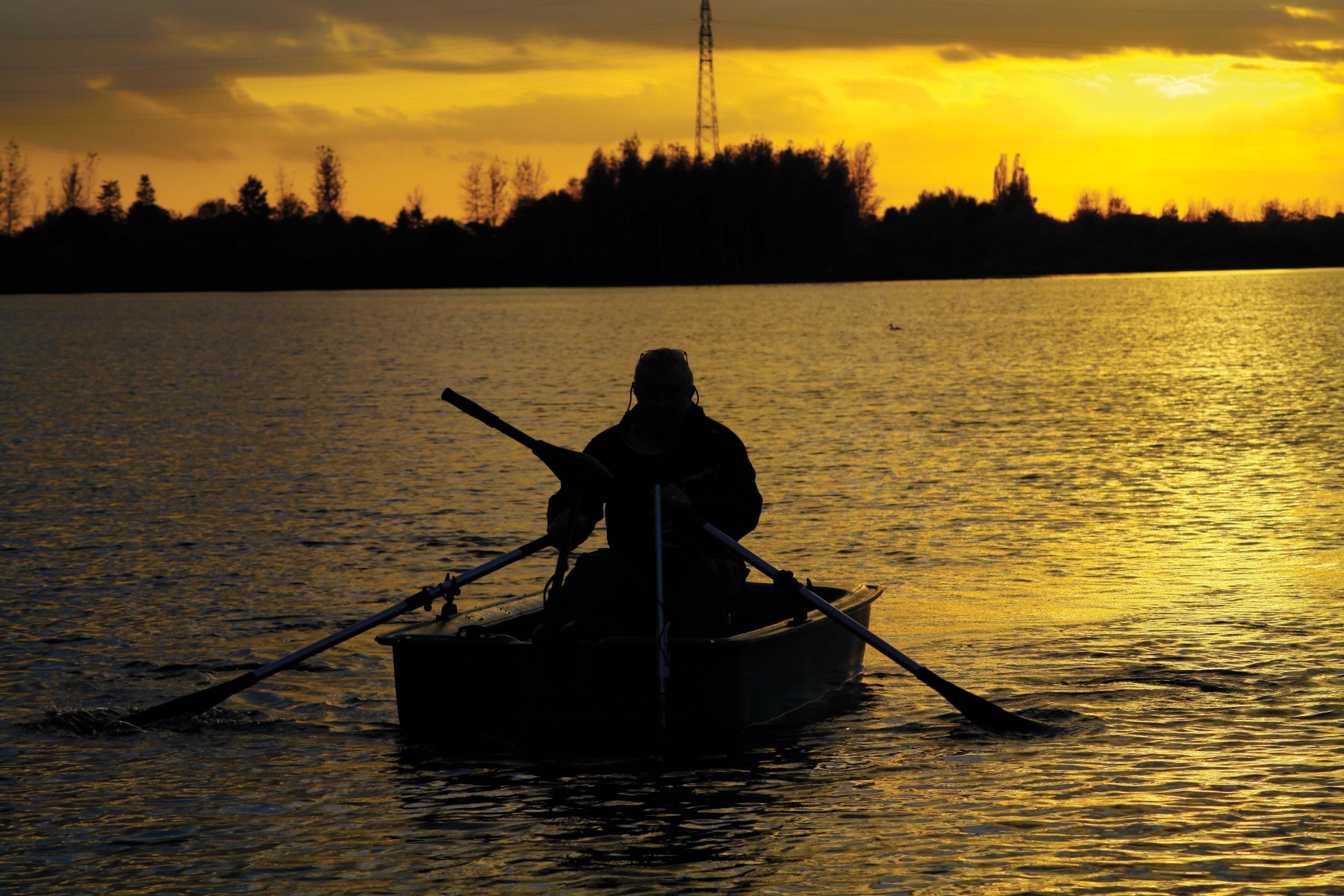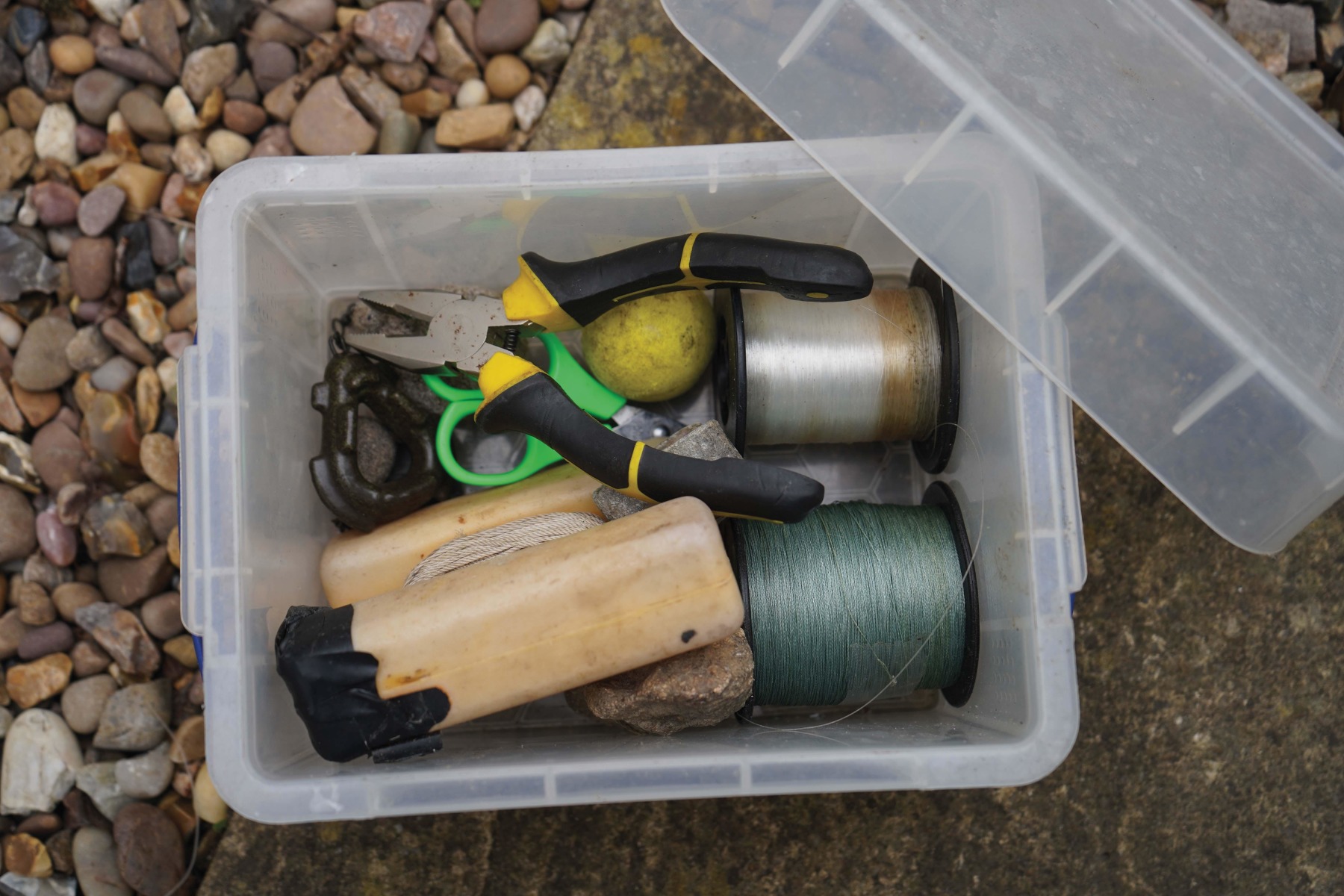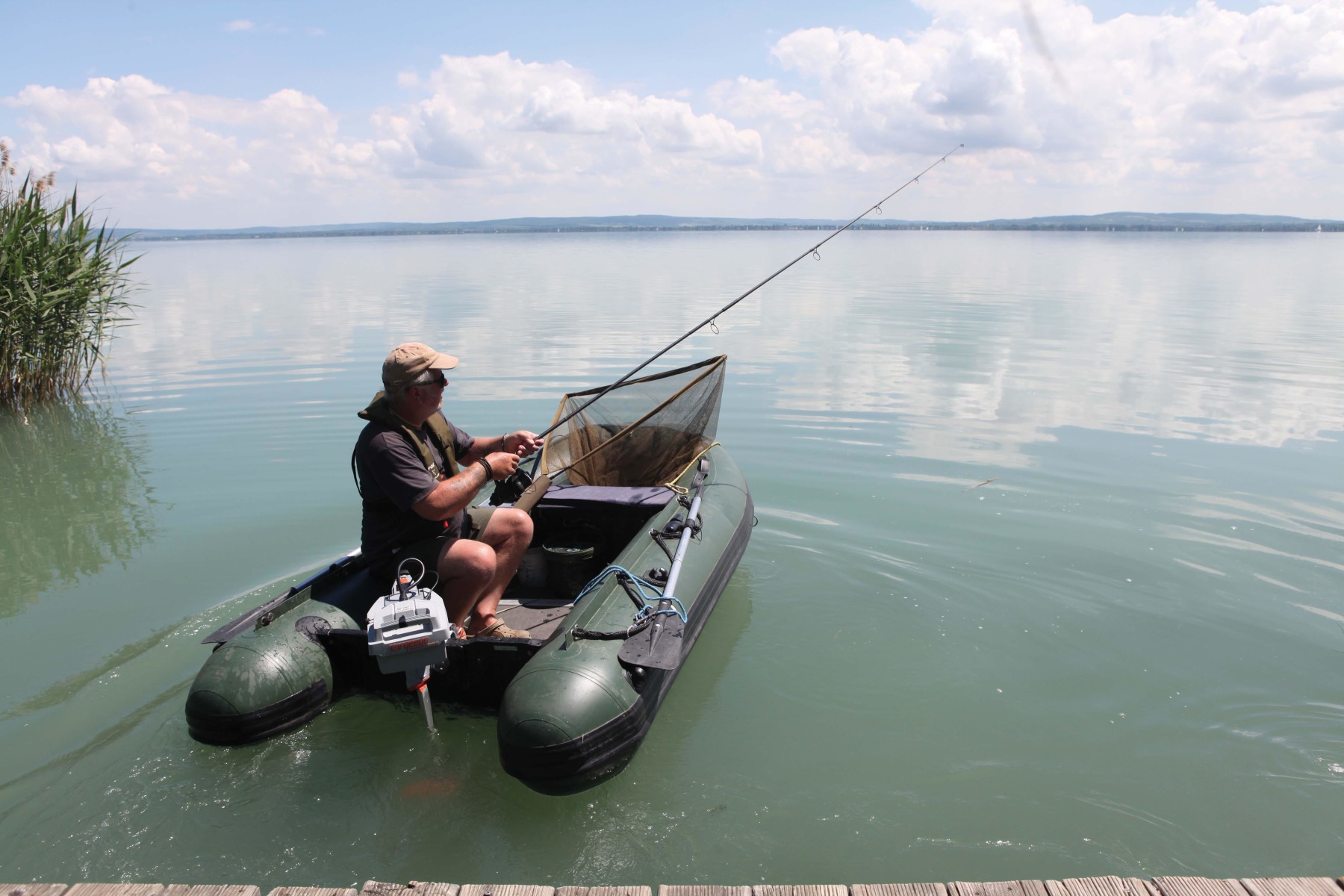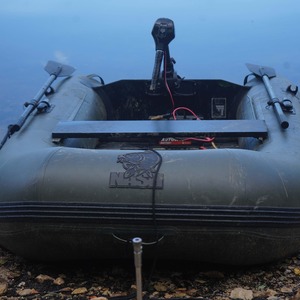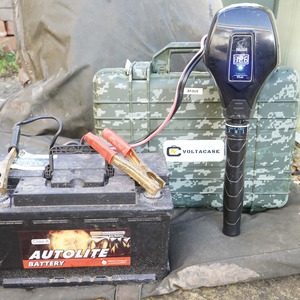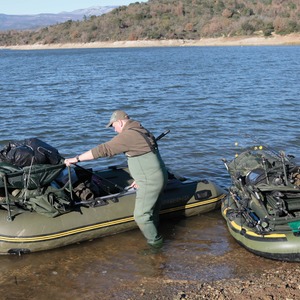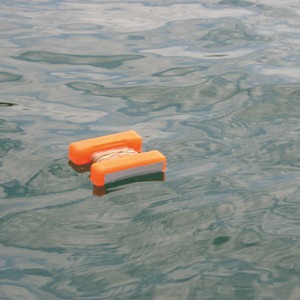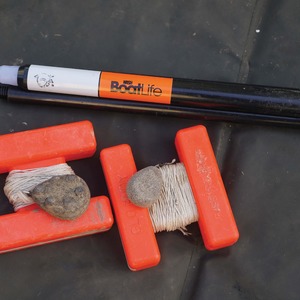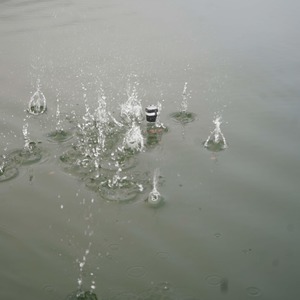How To Master Using A Rowing Boat
Steve Briggs is no stranger to life afloat. Here, he offers a number of tips to getting the most from a rowing boat
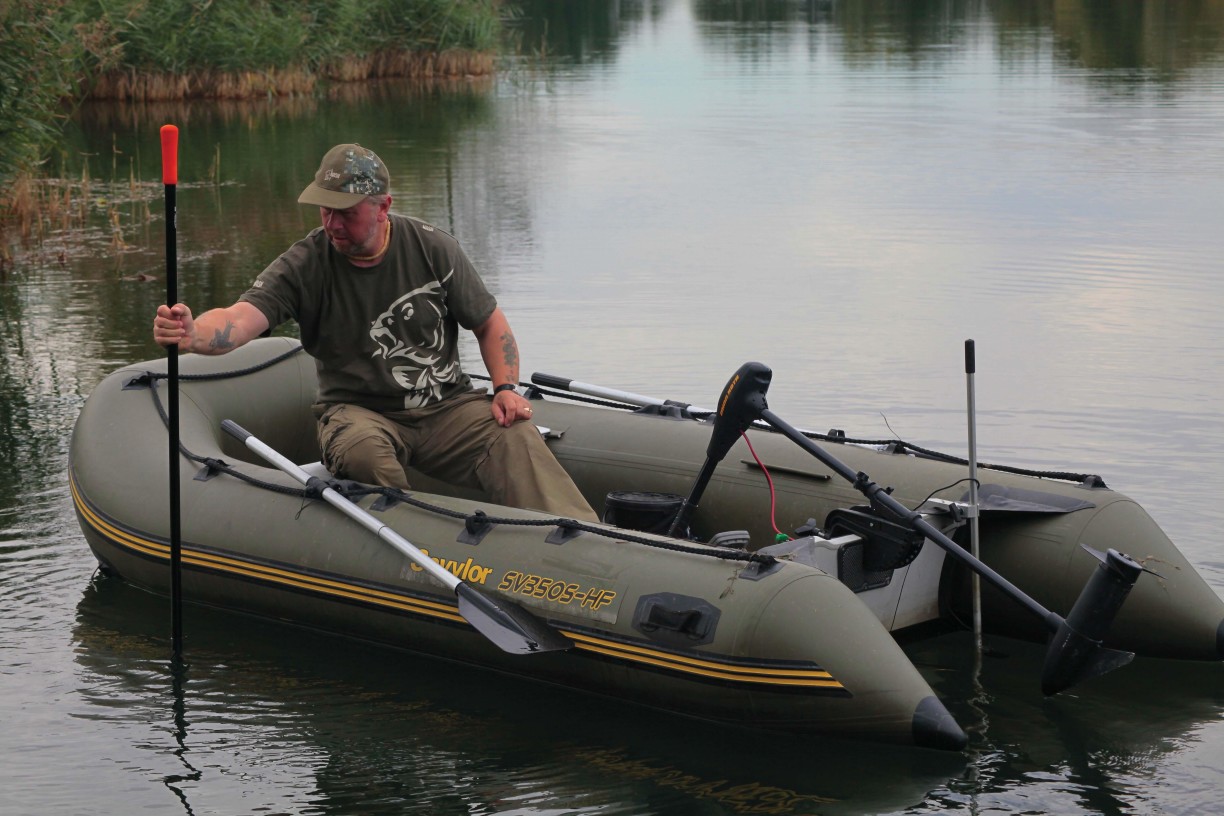
1. The Right Boat
Take care, and choose the right boat for the fishing you’ll be doing. Inflatables are more popular these days, and something between 2.5 metres and 3.5 metres will cover most situations. Exceptions include places such as Kingsmead Island Lake, which allows only solid boats. Then, many go for something like the BIC 245, or the old 252 version. Make sure it’s big enough and safe enough for the job.
2. Engine Power
In most fishing situations, only electric-powered engines will be permitted. Electric engines are gauged by thrust power, and generally something of 40lb and above will be the most suitable. Anything up to 65 or 70lb will be okay, but beyond that will be a bit over the top for our usage. A battery with a capacity of around 110 amp hours (Ah) is standard. A smaller one will be lighter, but will have less power. Conversely, one of 200Ah will be very heavy, but will last considerably longer. Lithium batteries are much lighter, but they’re also more expensive. Your choice, therefore, will depend on your priorities and your bank balance.
3. Loading the Boat
Think carefully when loading your boat. Ensure the weight is evenly balanced, and give yourself plenty of space so you can see around you and steer it comfortably. Place the heaviest items in the bottom, and avoid leaving rod tips sticking out from the front. I’ve seen some disasters, which is why, for boat work, I favour shorter rods like Scopes. Overloaded boats can be dangerous, so I’d rather use a small boat to carry the bulk of my gear initially. That makes the whole process more comfortable, and safer.
4. Finding and Mappings Spots
It’s difficult to gauge distance and your position when you’re out on the water. If I find an interesting feature, I find it best to drop an H-block-type marker immediately, as that gives me a fixed point to work from. I always have additional markers ready for when I find more points that interest me. It’s worth returning to your swim to view the markers before going further, as areas can look very different from the bank.
5. Markers
Different markers suit different situations. When finding features and for dropping quickly, in windy weather, H-blocks are probably the easiest to use and most effective. They can, of course, be used exclusively, but their cord can unravel in a strong wind, and worse still, if a hard-fighting fish goes around the cord. Pole-type markers are a better permanent solution. They stay in position well, and lines will go over them and flick off them easily, so they are less troublesome. The fish themselves seem to like these poles, and will rub themselves against them. As such,
they will often let you know they’re in the area.
6. Dropping Baits
Practice makes perfect, but the quicker you learn to do this, the better. I’m often surprised how close you can get to fish when dropping baits, but a common fault is anglers wanting to spend too much time out there getting everything just right. By the time you have everything as you want it, the fish will often have done the off! Take care not to drift as you drop baits and rigs. A marker will help you keep everything pinpoint, even if you then remove it once the work is done.
7. Coping with Wind
Windy conditions make all boat work more difficult. When baiting up, it’s generally easier to face the wind. I like to push into the wind with the oars. This gives me extra time before the momentum subsides and the wind starts to drag the boat from the spot. When using an engine, it is possible to place it in reverse on low power and hold your position, but this takes a bit of practice. Try to be aware of your position at all times. You can easily drift quickly without realising it. There always tends to be a calmer period most days, either in the morning or evening. It can be better, obviously, to bait up when conditions are most suitable.
8. Tool Kit
I always carry a small box of spares and tools in the boat. These cover me for a variety of problems that might crop up from time to time. Spare leads, hookbaits and rigs can save a trip back to the shore, should you hit a snag or drop a lead unexpectedly whilst out on the water, or when, perhaps, your rig is grabbed by a pike as you lower it down—this has happened to me several times. Pliers and scissors can be invaluable, should you go through a line with the engine. Without them, you’d be left stranded, out on the water.
9. Playing Fish From a Boat
Playing a fish from a boat is a lot different to doing so from the bank. A boat can be a big asset. The main difference, though, is that you don’t have a solid base to work from. Generally, it’s best to get above the fish as quickly as possible, so aim for the fish as you go, and whilst on medium power, take up the slack as you head towards it. Go slower, though, and keep a tighter line, if you need to keep the fish from moving any great distance, towards snags, for instance. Once above the fish, manoeuvre yourself to the centre of the boat, and sit facing the side, rather than the front. This will give a much more sturdy base to play the fish from. Let the fish do the work as it moves the boat around. It will then tire more quickly.
10. Handling Fish
Once a fish is netted, you have two main options. The first is to position the fish alongside the boat, but it’s important to face it in the direction of the bank—never attempt to move a fish backwards. Then, slowly make your way back to shore. This method at least ensures that the fish stays in the water for as long as possible. The other option is to carry a high-sided mat in the boat, preferably one with a cover that can be closed via Velcro, once the fish has been placed inside. The plus side of this method is that you can head much faster back to the bank, and this might be better for the fish if you have to go through weed or snags. Both methods have their day. It’s just a question of which you prefer or feel is best.
